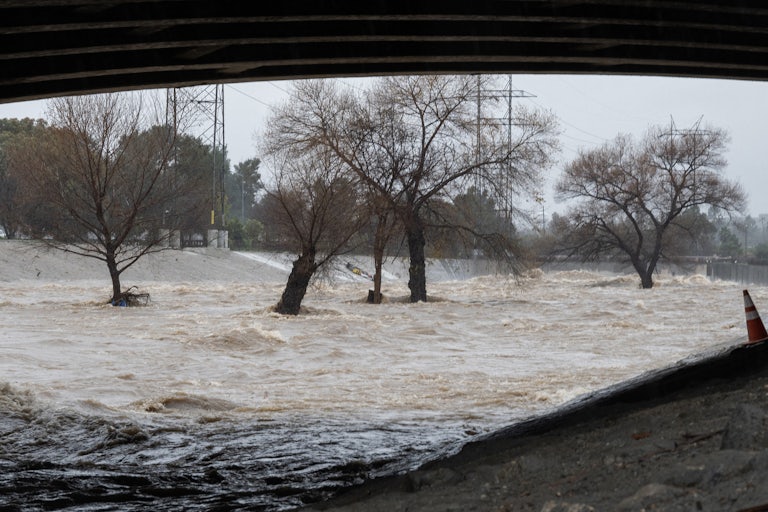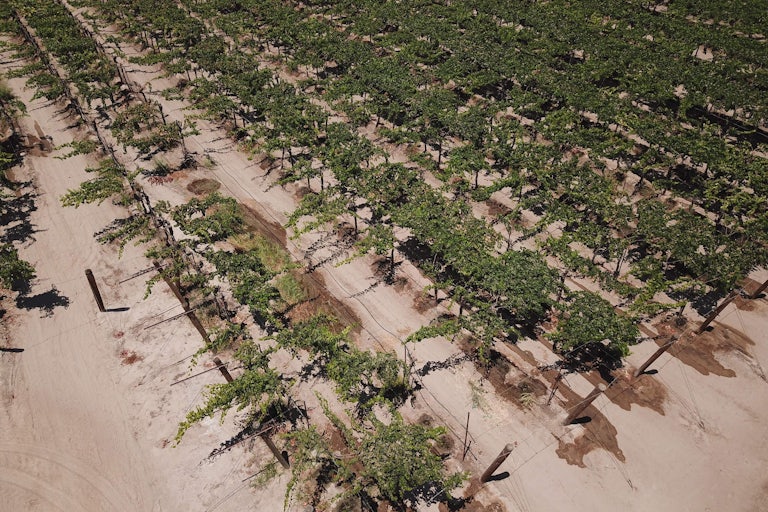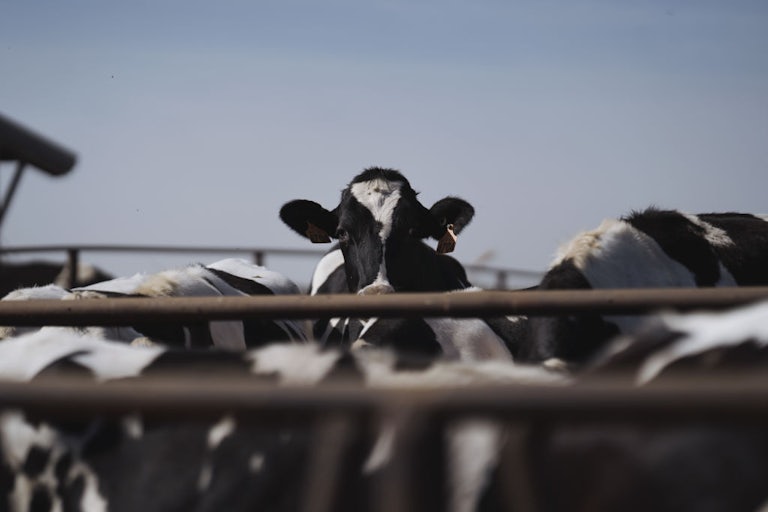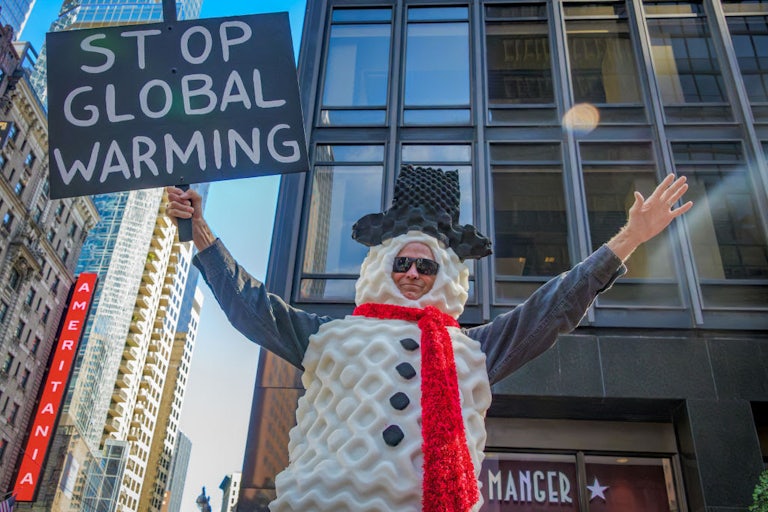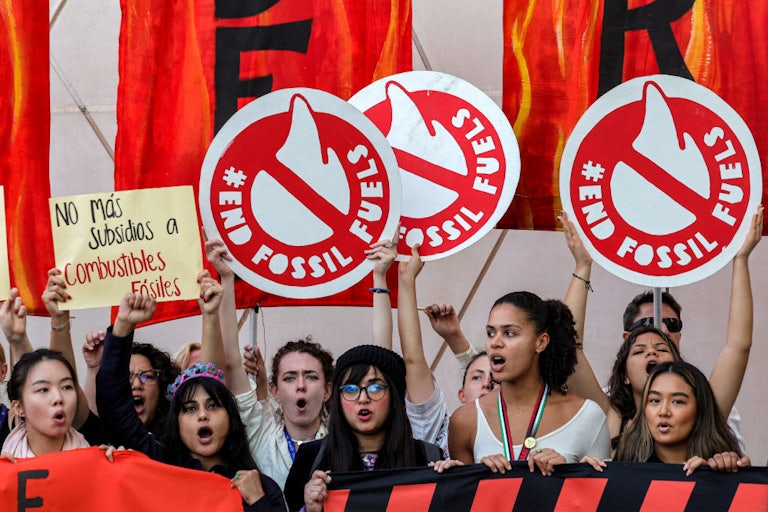The War on Wolves Will Hurt Humans Too
Republicans are ramping up their rhetoric on gray wolves while research is showing how useful these predators can be.

Republican Representative Pete Stauber offered a striking case study last week in the reinvigorated war on wolves. “A logger from northern St. Louis County just sent me this video of a wolf running through his job site and taking down a whitetail deer,” the Minnesota congressman tweeted, alongside footage of a wolf bounding over stumps in a clear-cut former forest. “As you can see, wolves lost any fear of humans and are increasingly dangerous to livestock & pets and decimating our deer herd. Delist!”
Stauber’s tweet drew an avalanche of criticism from what remains of liberal Twitter on the site now known as X. “You’re out there cutting down their home and have the audacity to talk about where the wildlife is,” reads the top reply. Others made use of the platform’s new “Community Notes” to post a 1999 ecology paper beneath the congressman’s tweet, focusing on the role wolves play in maintaining stable deer populations. But here’s what stood out to me:
First, Stauber’s call to “delist” gray wolves—that is, to remove them from protection under the Endangered Species Act—comes as the 2024 election heats up. And four years ago, as the 2020 election loomed, the Trump administration did exactly what Stauber desires. “It’s the latest in a series of administration actions on the environment that appeal to key blocs of rural voters in the race’s final day,” the AP reported at the time, noting that wolf hunts could resume in “Michigan, Minnesota and Wisconsin—a crucial battleground in the campaign between President Donald Trump and former Vice President Joe Biden.” The decision was later reversed by court order: U.S. District Judge Jeffrey White, a Bush appointee, ruled in 2022 that the delisting qualified as “arbitrary and capricious” under the Administrative Procedure Act, and was therefore unlawful.
Of course, the extent to which gray wolves are actually “listed” in any meaningful sense is debatable. Despite the 2022 court order, gray wolves are not, in fact, federally protected in many states, including Montana, Wyoming, Idaho, and parts of three other states. This has to do with a random rider inserted in a 2011 budget bill by Montana Democratic Senator Jon Tester and Idaho Republican Representative Mike Simpson, who also stipulated that the rider would be exempt from judicial review.
2011 was the first time Congress had ever removed a species’ protections under the Endangered Species Act. The rider was widely perceived to be Tester’s attempt to gain ground over Republican challenger Denny Rehberg, a former cashmere goat and cattle rancher who kept a stuffed wolf’s head on a wall in his office. Tester won that election despite Rehberg’s attempt to claim credit for the wolf delisting, and is up again for reelection this year. Rehberg, incidentally, may also be on the ballot: Politico reported his intention to run for the congressional seat in Montana’s 2nd district only an hour after Stauber tweeted the logger’s video.
Second, the full delisting of the gray wolf actually looks increasingly likely right now. On February 2, the U.S. Fish and Wildlife Service announced the results of a recent review of gray wolves’ status, finding that protections were “not warranted” for either the gray wolf population in the Northern Rocky Mountains or the population in the Western United States. This on its own doesn’t change the wolves’ status, but it makes it a lot more likely that they will eventually be delisted—sooner rather than later if Trump is elected in November. (Stauber, incidentally, signed the amicus brief asking the Supreme Court to overturn the results of the 2020 election in favor of Trump.)
And third, the renewed focus on delisting comes as more research suggests gray wolves—and many other predators—should be protected not because of whether or not they meet the current definition of “endangered” but because they are extremely helpful. Not only do they control the populations they prey on, often improving the health of those populations, but the knock-on effects of that predation can be remarkable.
In boreal forests, one study has estimated that by limiting the number of moose, which eat trees and shrubs, wolves could lead to vastly more carbon being sequestered per year than would otherwise occur—roughly the amount emitted by 33–71 million cars. While that finding may not hold for all ecosystems, researchers have modeled a similar effect for sea otters in kelp forests. Another study in 2021 found that predators help “buffer” the effects of heat waves on ecosystems. Lack of predators is believed to be a key factor in deer overpopulation in some areas of the country, driving a dangerous increase in tick-borne diseases that can infect humans. Not just Lyme disease but babesiosis is now spreading rapidly via deer ticks, The New York Times reported last year. Large white-tailed deer populations may also be contributing to the spread of the lone star tick, which can transmit ehrlichiosis, alpha-gal syndrome, and Bourbon virus, according to Undark magazine.
As Eleanor Cummins wrote for The New Republic in 2021, arguments against wolves usually fall apart under scrutiny, even when it comes to ranching:
In a 2015 study, the U.S. Department of Agriculture found that less than 5 percent of cattle and calves die from predation combined, and the single biggest cause of those deaths is coyotes. Of the 3.9 million cattle and calf losses reported that year, just 2,040 deaths could be attributed to wolves.…
Arguments about protecting elk and deer prove equally flimsy. Wolves tend to pick off the old and the weak of a herd, which benefits the health of the overall hunting stock. If wolves were to kill too aggressively, they’d be the first to suffer, as predator populations dip when they don’t have enough prey to eat.
All signs point to wolves’ growing status in humans’ culture wars this year. In order to fit a neat narrative, politicians will likely focus on the yes-or-no question of “listing” versus “delisting.” But as research is increasingly showing, the best arguments for protecting wolves have little to do with whether they’re currently on the “endangered” list.
Good News/Bad News
![]()
Stat of the Week
33,774 sq. miles
That’s the increase in the area of land in Greenland now sporting plant life rather than ice, relative to when monitoring of the massive ice sheet began in the 1980s.
What I’m Reading
Cement Is a Big Part of the Carbon Problem. Here’s How to Make It Part of the Solution
Jeffrey Rissman imagines a world where we don’t just reduce the massive emissions from cement and concrete but actually reverse them:
By combining clean heat with carbon-free minerals or equipment to capture the carbon emissions from breaking down limestone, cement-making could become carbon neutral by 2045. That’s an excellent first step, but the innovations happening today could take us beyond carbon neutral.
After concrete is made, it gradually absorbs carbon dioxide from the atmosphere in a process called carbonation. With the ingredients and techniques common today, making cement produces more emissions than the material can later absorb, so every new ton of cement worsens climate change. But if cement kilns are heated with clean electricity and the emissions from breaking down minerals are avoided or stored underground, then the simple act of pouring concrete would remove carbon pollution from the air. New construction would help repair our climate.
Read Jeffrey Rissman’s op-ed at The Los Angeles Times.
This article first appeared in Life in a Warming World, a weekly TNR newsletter authored by deputy editor Heather Souvaine Horn. Sign up here.
